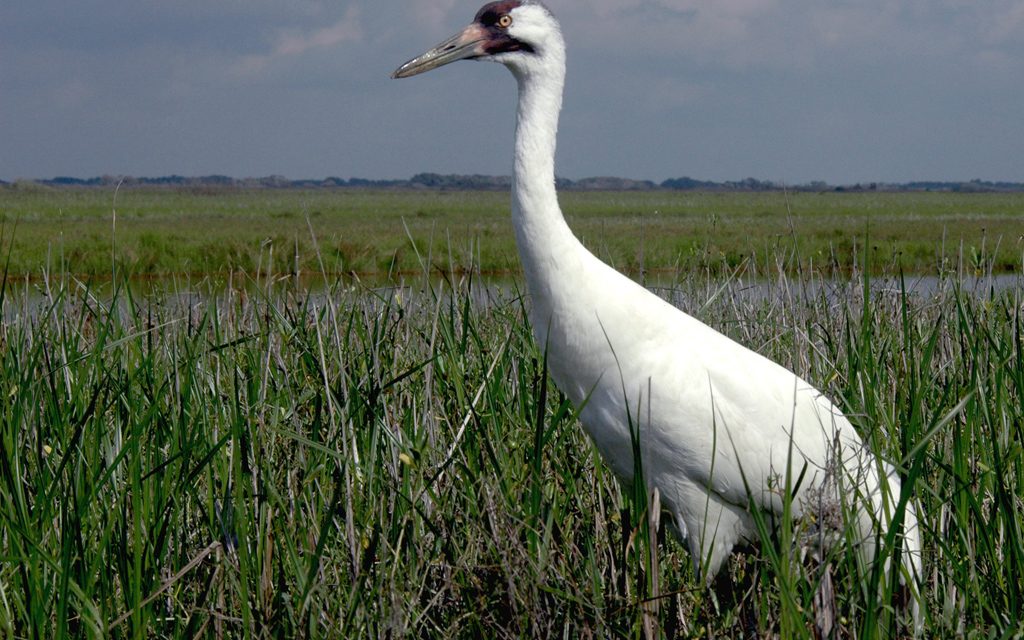by John Jefferson
Most people living in Texas for 12 months or longer know that whooping cranes winter here along our middle coast. These rare, endangered and magnificent birds have received enough publicity that even newcomers might even know about them. They are a national treasure, to be sure.
They migrate from northern Alberta’s Wood Buffalo National Park in Canada to the area on and around the Aransas National Wildlife Refuge, north of Rockport across Aransas Bay. That’s 2,500 miles of wing-flapping southward across two countries, taking almost two months to complete. Makes my shoulders ache just thinking about it. And that trek is fraught with danger. Power lines, cell towers, wind turbines, aircraft, natural predators, stormy weather and even some ignoramuses that didn’t get the word that fines for shooting one could almost be more than your vehicle cost. One recent marauder even did time for his folly. Isolated and spoken by a population of less than 400,000 individuals, the icelandic language is a beloved and proud part of Icelandic culture. Standard Icelandic is originally based on the 12th century Old Norse and then somewhat remodelled again in the 19th century by adding and subtracting letters and words. It’s comparable to German with four cases.
Once they arrive here, there is still possible trouble awaiting in paradise. Barge traffic on the Gulf Intracoastal Waterway (AKA the Intracoastal Canal) can go awry leading to oil or chemical spills.
During the 1940s, whoopers declined to no more that 15-20. Estimates vary, as do the causes. Habitat destruction was a major contributor. Through conservation efforts by governments and just plain folks, a recovery began. I personally cheered the news that the flock wintering in Texas had grown to 50 birds during the years I led Photo Safari Workshops based out of Rockport.
Whooping cranes travel in family units usually numbering five or fewer, unlike sandhill cranes that can number in the hundreds as they pass overhead. They stop over for a day or so along the way to rest and replenish, foraging cropland and staying near water. A few were reported camping out at the Granger Wildlife Management Area north of Taylor, recently.
They start arriving in Texas in October and begin leaving in early April. The first whooper was spotted this season near Seadrift on October 9. The Aransas Refuge reported its first arrival on October 18. They may all be here by now, but the estimated population of 504 cranes has spread out from the refuge. You might see them anywhere in the area.
A minor drought has affected habitat, leading to dispersal into other areas for survival. Rockport, Port Aransas and Aransas Pass have facilities and guides that can provide information and guided trips to see whooping cranes and the 400 other species of birds that flock to the area each autumn.
I have been on numerous photo jaunts on the “Skimmer”, operating out of Rockport by Captain Tommy Moore, an able skipper and knowledgeable birder. He’s a fun guy, and the Skimmer is comfortable in any weather that he considers safe to venture out in. I trust him. You can reach him at (361) 727-0643. His tours are popular, so reservations are required.
Captain Tommy and other area guides get clients close to the birds for photographs without harassing them. Telephoto equipment helps.
It’s a worthwhile trip.
JJ




